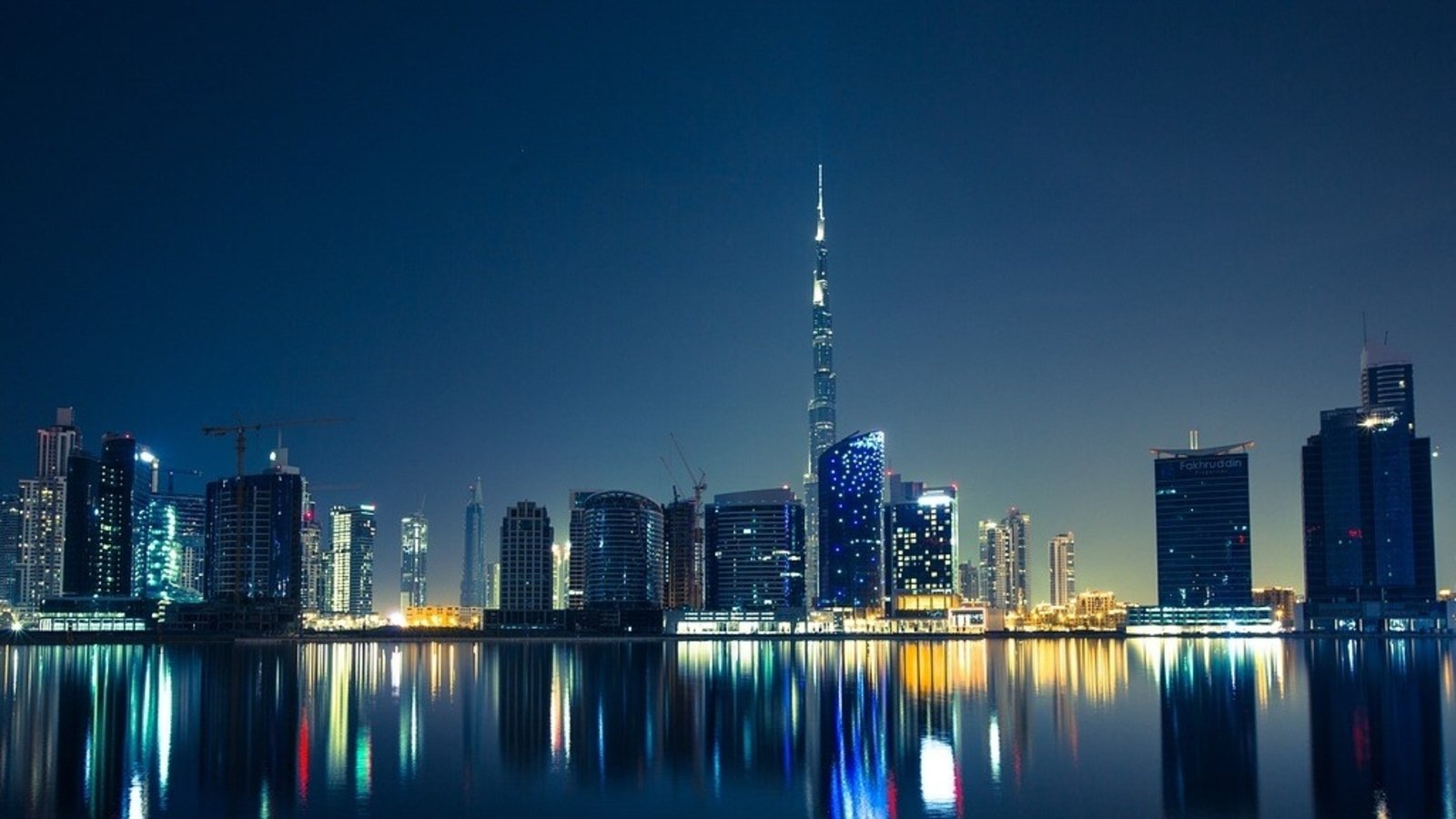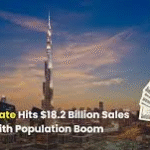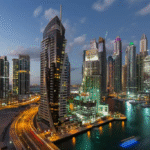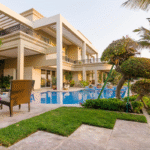Now Reading: 7 Strategic Impacts of White Land Tax Amendments in 2025
-
01
7 Strategic Impacts of White Land Tax Amendments in 2025
7 Strategic Impacts of White Land Tax Amendments in 2025
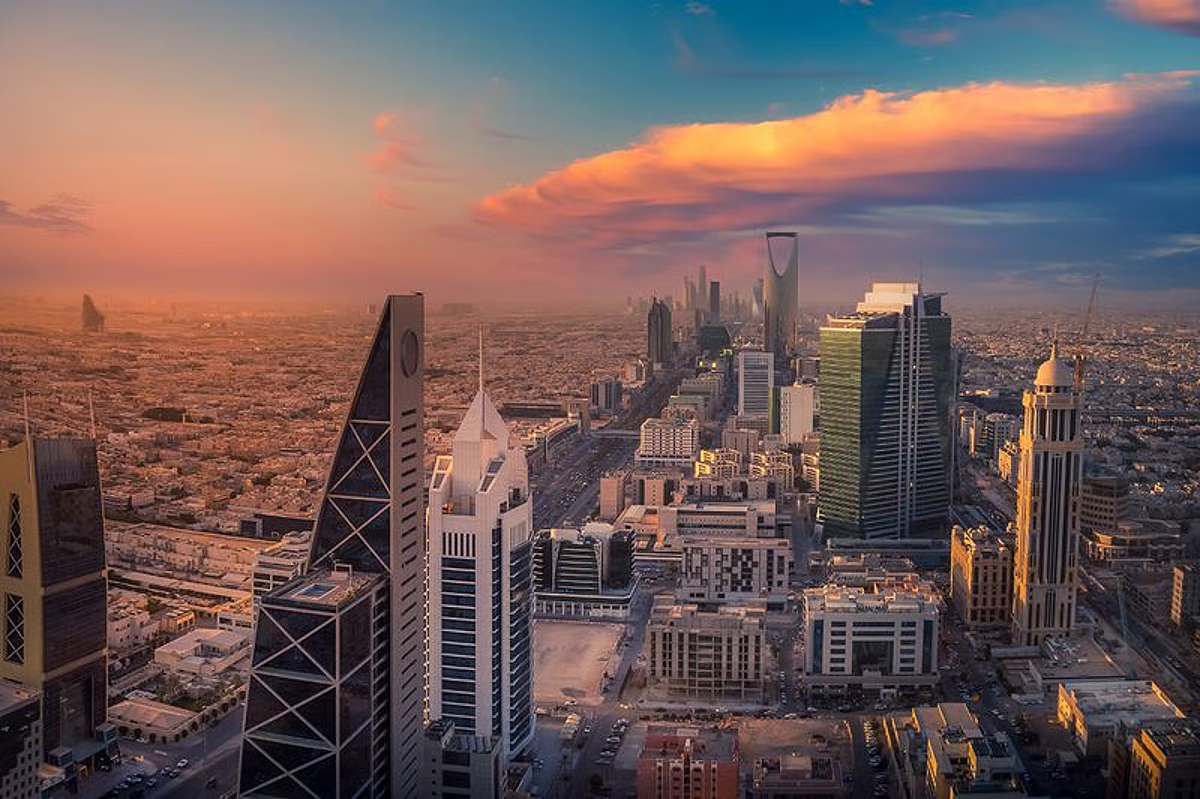
Table of Contents
Saudi Arabia’s real estate market, a vital component of the Gulf Cooperation Council’s (GCC) $131.36 billion industry in 2025, is projected to reach $344.66 billion by 2033 with a 7.1% CAGR, driven by Vision 2030 and giga-projects like NEOM, per imarcgroup.com and economymiddleeast.com.
The White Land Tax (WLT) Law, introduced in 2016 under Royal Decree No. M/4 and amended on April 29, 2025, per dlapiper.com, raises the annual levy on undeveloped urban land from 2.5% to 10% and introduces a 5% tax on long-vacant properties, per saudigazette.com. Administered by the Ministry of Municipalities and Housing, these changes target SAR 20–50 million ($5.33–$13.33 million) investors and aim to curb speculation, boost housing supply, and align with Vision 2030’s 70% homeownership goal, per gulfnews.com.
This guide, crafted in clear, SEO-friendly language with an engaging tone, outlines seven strategic impacts of the 2025 WLT amendments on Saudi Arabia’s real estate market, supported by data, legal insights, and actionable strategies.
7 Strategic Impacts of White Land Tax Amendments
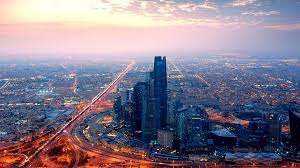
1. Accelerated Land Development
The 10% annual tax on undeveloped land over 5,000 square meters incentivizes owners to develop or sell, reducing idle plots in urban centers like Riyadh, per agbi.com. This boosts SAR 30 million ($8 million) development projects, increasing housing supply by 15–20%, per arabnews.com.
- Impact: Adds $80,000 annual tax on $800,000 plots, spurring $1.33 million developments, per addleshawgoddard.com.
- Action: Develop SAR 20 million ($5.33 million) residential projects in Jeddah using modular construction, saving 20% on costs, per arabnews.com.
- Example: A $545,000 Riyadh plot owner develops 10 units, yielding $65,400 at 12%, avoiding $54,500 tax.
- Source: agbi.com, arabnews.com, addleshawgoddard.comweb:0,5,12,13,15
2. Increased Housing Supply
The amendments address Saudi Arabia’s housing shortage, with 66% homeownership targeted for 2025, per saudigazette.com. By taxing vacant properties at 5%, the WLT unlocks 411 million square meters for development, per saudigazette.com, benefiting SAR 15 million ($4 million) investors.
- Impact: Releases $2.67 million worth of land, adding 50,000 units, per dlapiper.com.
- Action: Invest in SAR 10 million ($2.67 million) affordable housing in Dammam, priced at SAR 250,000–1.2 million ($66,667–$320,000), per gulfnews.com.
- Example: A $1.33 million Jeddah project yields $106,400 at 8%, meeting demand for 1,000 units.
- Source: saudigazette.com, dlapiper.com, gulfnews.comweb:4,5,12
3. Reduced Land Speculation
The 10% tax discourages land hoarding, stabilizing prices in Riyadh, where real estate transactions grew 8% annually, per agbi.com. This benefits SAR 50 million ($13.33 million) investors seeking predictable returns, per lexology.com.
- Impact: Saves $266,600 on $5.33 million land purchases due to 5–7% price moderation, per arabnews.com.
- Action: Buy SAR 20 million ($5.33 million) plots in Makkah for immediate development, per addleshawgoddard.com.
- Example: A $545,000 Madinah plot avoids $54,500 tax, appreciating $43,600 at 8%.
- Source: agbi.com, lexology.com, arabnews.comweb:0,5,13,15
4. Enhanced Tenant Retention
The 5% tax on vacant properties encourages landlords to retain tenants, stabilizing rental markets in Jeddah with 7–9% yields, per aawsat.com. This supports SAR 10 million ($2.67 million) rental portfolios, per alaan.com.
- Impact: Reduces $27,250 vacancies on $545,000 properties, securing $43,600 yields, per finanshels.com.
- Action: Offer competitive SAR 5 million ($1.33 million) leases in Al Khobar, aligned with market rates, per psinv.net.
- Example: A $545,000 Dammam property retains tenants at $38,910 rent, avoiding $27,250 tax.
- Source: aawsat.com, alaan.com, finanshels.com
5. Boosted Economic Diversification
The WLT amendments align with Vision 2030, revitalizing 150 related sectors like construction, per aawsat.com. SAR 20 million ($5.33 million) investments in Riyadh’s giga-projects like Qiddiya yield 10–12% returns, per economymiddleeast.com.
- Impact: Creates $1.33 million in jobs, boosting $106,400 project yields, per agbi.com.
- Action: Invest SAR 15 million ($4 million) in NEOM’s residential units, per tencohomes.com.
- Example: A $1.33 million Qiddiya investment yields $159,600 at 12%, supporting 500 jobs.
- Source: aawsat.com, economymiddleeast.com, agbi.comweb:0,16
6. Improved Market Balance
By taxing idle land and properties, the WLT reduces supply-demand imbalances, moderating 20% price surges in Riyadh, per gulfnews.com. SAR 30 million ($8 million) investors benefit from stable 6–8% yields, per makca.co.
- Impact: Stabilizes $5.33 million portfolios, saving $266,600 on overpriced assets, per dlapiper.com.
- Action: Target SAR 20 million ($5.33 million) off-plan projects in Tabuk, per nevestate.com.
- Example: A $545,000 Taif property yields $43,600 at 8%, avoiding $27,250 vacancy tax.
- Source: gulfnews.com, dlapiper.com, makca.coweb:5,12
7. Increased Compliance Costs

The amendments require landowners to register within 90 days for white land and one year for vacant properties, with fines up to AED 50,000 ($13,605) for non-compliance, per cleartax.com. This impacts SAR 15 million ($4 million) portfolios, per lexology.com.
- Impact: Adds $13,605 in penalties, reducing $43,600 yields on $545,000 assets, per addleshawgoddard.com.
- Action: Register SAR 10 million ($2.67 million) properties via Ministry portals, per saudigazette.com.
- Example: A $545,000 Riyadh plot owner avoids $13,605 fines, preserving $65,400 yields at 12%.
- Source: cleartax.com, lexology.com, saudigazette.comweb:4,12,15
Legal and Tax Framework
- Saudi White Land Tax Framework:
- Rate: 10% annually on undeveloped land ≥5,000 m², 5% on long-vacant properties, per dlapiper.com.
- Scope: All urban land, including non-residential/commercial, per addleshawgoddard.com.
- Registration: 90-day deadline for white land, one-year for vacant properties, per lexology.com.
- Penalties: Fines up to AED 50,000 ($13,605) for non-compliance, per cleartax.com.
- Exemptions: Land with development obstacles (e.g., no utilities), per saudipedia.com.
- Revenue Use: Funds housing and infrastructure, per aawsat.com.
- Other Saudi Taxes:
- VAT: 15% on commercial transactions, zero-rated for residential sales, per taxsummaries.pwc.com.
- RETT: 5% on property transfers, per deloitte.com.
- CIT: 20% on profits above SAR 375,000 ($100,000), per pwc.com.
- Zakat: 2.5% on net wealth for Saudi/GCC nationals, per taxsummaries.pwc.com.
- U.S. Tax Framework:
- Reporting: Forms 1040, 1116, Schedule E under FATCA, income taxed at 10–37%, capital gains at 0–20%, per IRS.
- Foreign Tax Credit (FTC): Offsets Saudi VAT/RETT, per brighttax.com.
- FEIE: $130,000 exclusion for earned income, not rentals.
Risks and Mitigation
- High Tax Burden: 10% tax risks $80,000 costs on $800,000 plots, per agbi.com. Develop or sell within 90 days, per dlapiper.com.
- Oversupply: 50,000 new units may cut yields by 1–2% in Riyadh, per arabnews.com. Target Jeddah/Makkah, per tencohomes.com.
- Compliance Fines: AED 50,000 ($13,605) penalties, per cleartax.com. Use Ministry portals, per saudigazette.com.
- Currency Volatility: SAR/USD fluctuations impact returns. Hedge via Saudi National Bank, per omniacapitalgroup.com.
- U.S. Tax Burden: IRS reporting reduces returns. Maximize FTC, per brighttax.com.
Step-by-Step Guide for U.S. Investors
- Assess Portfolio: Evaluate SAR 20–50 million ($5.33–$13.33 million) land holdings for tax exposure, per addleshawgoddard.com.
- Target Development: Invest in SAR 15 million ($4 million) projects in Makkah or NEOM, per economymiddleeast.com.
- Budget Taxes: Allocate $545,000–$13.33 million, factoring 10% WLT ($54,500–$1.33 million) and 5% RETT ($27,250–$666,500), per dlapiper.com.
- Register Properties: Submit data within 90 days via Ministry portals for SAR 20 million ($5.33 million) assets, per saudigazette.com.
- File Taxes: Submit VAT/RETT by April 30, 2025, and U.S. taxes by April 18, 2025, with FTC, per brighttax.com.
- Monitor Yields: Track 6–12% returns via sakani.sa, per hermesre.ae.
- Engage Advisors: Use FTA-registered consultants for SAR 15 million ($4 million) compliance, per alaan.com.
Conclusion
Saudi Arabia’s $131.36 billion real estate market, set to reach $344.66 billion by 2033, is transformed by the 2025 White Land Tax amendments, raising levies to 10% on undeveloped land and 5% on vacant properties, per imarcgroup.com and dlapiper.com. These changes drive SAR 20–50 million ($5.33–$13.33 million) investors to develop, saving up to $266,600 while boosting 6–12% yields in Riyadh and Jeddah, per arabnews.com and saudigazette.com. U.S. investors, leveraging FTC and Ministry compliance, can mitigate risks like oversupply, securing returns in Vision 2030 projects, per agbi.com. The WLT aligns with Saudi Arabia’s goal of 70% homeownership, cementing its global investment appeal. white land tax
read more: 5 Strategic Ways Blockchain Slashes Tax Compliance Costs in 2025



